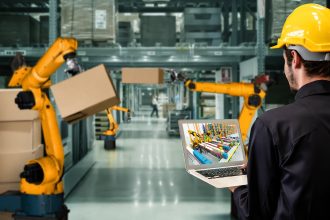Maintain Your SLAM Equipment

Having a well-trained team in-house will keep your equipment humming.
With ongoing labor shortages and increasing demand, warehouses are turning to automation more than ever. This comes in many forms, from material handling equipment like forklifts and conveyors, to autonomous mobile robots (AMRs) and automated guided vehicles (AGVs). While automation can be critical in increasing your efficiency of operations, it does require maintenance and from time to time, repairs, as well. To make the most of your automation investment, it’s important to then have your own technical support team. This holds true with your SLAM equipment, too, in the final 100 feet of your warehouse.
Depending on the size of your warehouse, you may or may not already have some of this team in place. Larger companies—and especially manufacturers—may have dedicated maintenance teams. But a smaller company new to the adoption of technology likely doesn’t have a skilled team ready to maintain and service new equipment and technology.
Conveyors, labeling equipment, and packaging machinery all require some type of preventive (and eventually reactive) maintenance. If a problem shows up and you don’t have trained labor to fix it, you’re in a bind. Or if a worker loads a label improperly and it stops your ability to print, you want to fix it as quickly as possible. Otherwise, you’re depending on your supplier, which generally won’t be an instant fix. You’ll need to divert the final processing of outgoing packages, losing time and productivity.
Instead, tap into your SLAM supplier’s technicians to educate and train your team. Have them return to your warehouse two to three months after equipment installation to see how you’re doing and answer questions that you didn’t think of when the equipment was brand new. To build your internal team, start by appointing one key point person within your company to take ownership of the processes. This is ideally someone who is mechanically inclined. You’ll then want some overlap in the form of other team members who can learn how to maintain equipment.
To properly equip your service members, you need to equip them with tools and have a high bandwidth internet on the floor so that they can communicate with the supplier if needed. Remote troubleshooting isn’t always possible, so be prepared that as a last resort, you’ll need to bring someone in from the supplier.
You should also consider having your SLAM supplier set up a regular scheduled PM (preventative maintenance) visit to go completely through your system. This could be annually, semi-annually and will depend on the number of orders and your system layout. There are items that your supplier tech will be able to do that your internal person will not pick up on or know how to. The SLAM line is an investment that helps you to reduce cost but it is a piece of equipment. Regular maintenance of a car usually includes filling it with gas, changing the oil, and adding air to the tires as needed. However, when it comes to the more complicated maintenance such as a tune up or replacing the brakes, most car owners take their car to a mechanic that has the knowledge and correct tools to complete the job.
Keep in mind that once you’ve added SLAM automation, you’re going to need a different set of personnel skills than what you had in the past, especially if you want to get your maintenance and servicing right. Also keep in mind that often, the issues you face with your equipment might not even mean something is wrong with it, but rather, user error may have caused it. Whatever the case, building up a well-trained maintenance team—and establishing an ownership mindset– will see you through most of your issues.
To learn more about MHI’s SLAM industry group: www.mhi.org/slam
More information about Scanning, Labeling, Applying, Manifesting:
How SLAM Helps Get the Order Right
Using Peak Season for Next Season
Podcast: Elevating Order Fulfillment: VRCs & SLAM Efficiency in the Modern Warehouse
How SLAM Saves on Shipping Costs
Prevent Chargebacks Via SLAM Equipment



